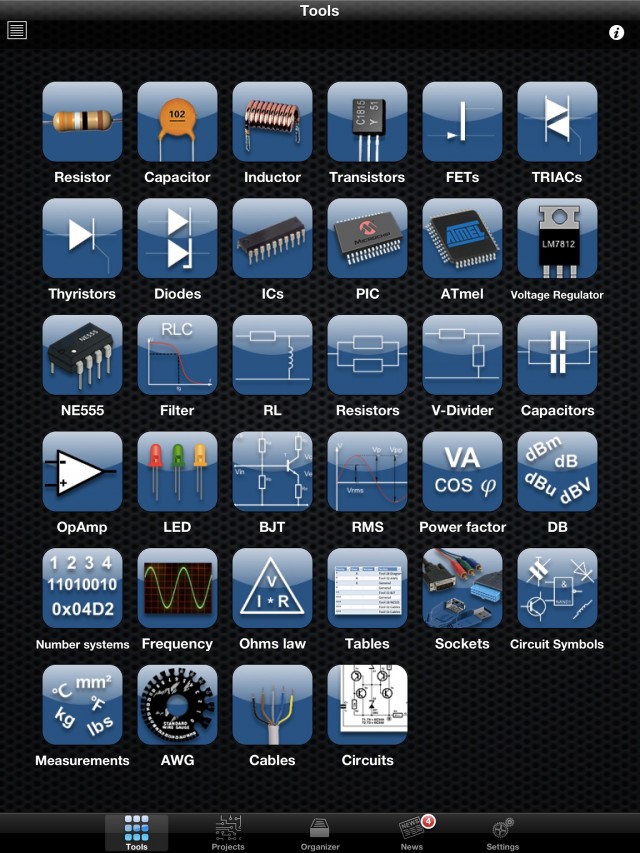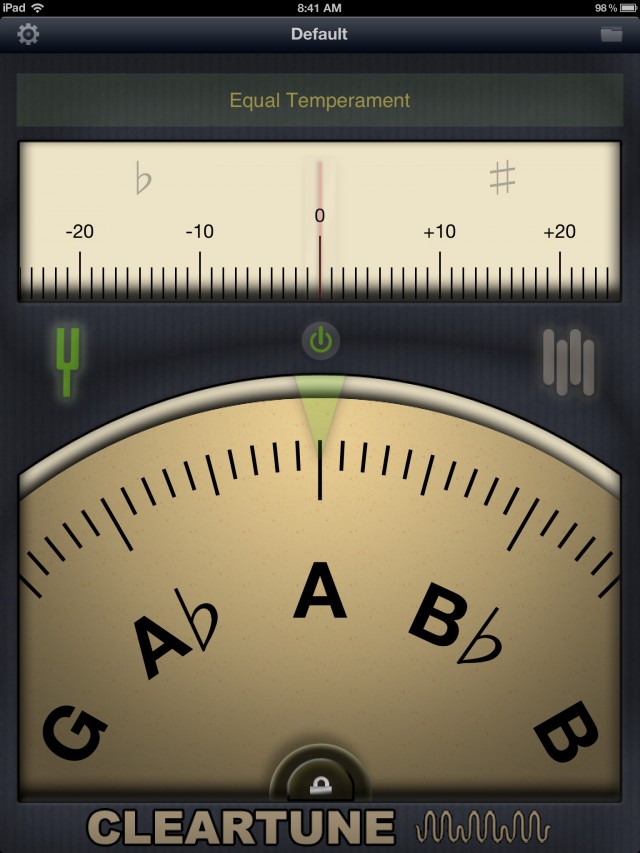Stay One Step Ahead with the Best Payment Methods for Online Casino Bonuses
When it comes to online gambling, finding the best MuchBetter casino sites can make all the difference in your gaming experience. MuchBetter is an innovative payment solution that allows players to make fast and secure transactions. With its seamless integration and user-friendly interface, this e-wallet has gained popularity among online casino enthusiasts. Whether you are a seasoned player or new to online gambling, choosing a MuchBetter casino can provide you with a convenient and enjoyable gaming experience.
One of the top MuchBetter casino sites is https://csiss.org/deposit-methods/muchbetter/. This online casino has embraced MuchBetter as a preferred payment method, ensuring that players can easily deposit and withdraw funds. CSISS offers a wide selection of casino games, including slots, table games, and live dealer options. With its user-friendly website and mobile app, players can enjoy their favorite casino games on the go. The casino also boasts a generous welcome bonus and regular promotions, ensuring that players have ample opportunities to boost their bankroll.
Another excellent MuchBetter casino option is csiss. Known for its extensive game selection, this online casino caters to players of all preferences. From classic slots to progressive jackpots and live casino games, there is something for everyone at CSISS. The site also features a sleek and modern design that allows for easy navigation, making it a pleasure to explore the wide range of games. With its integration of MuchBetter as a payment option, players can enjoy swift and secure transactions, ensuring that their gaming experience is hassle-free.
In conclusion, selecting the best MuchBetter casino sites can greatly enhance your online gambling experience. Not only does MuchBetter provide a convenient and secure payment solution, but it also allows for seamless integration with top online casinos like csiss.org. With its extensive game selection, user-friendly interface, and generous promotions, [CSISS] is an excellent choice for players looking for a top-notch gaming experience. So, why not give MuchBetter a try and enjoy the benefits it brings to your casino gaming?
When it comes to online gambling in Austria, one of the most important factors to consider is the withdrawal process. Players want to ensure that they can access their winnings quickly and conveniently. That`s why the best online casino instant withdrawal in Austria is in high demand among avid gamblers. One platform that stands out in this regard is https://online-casino-osterreich.org/sofort/. With its seamless and efficient withdrawal system, players can enjoy their winnings instantly.
One of the key reasons why this online casino is considered the best for instant withdrawals is its partnership with reputable payment providers. They offer a wide range of options, including popular e-wallets such as Skrill and Neteller, as well as traditional bank transfers. This means that players can choose the method that suits them best and receive their funds without any unnecessary delays. Additionally, the casino`s user-friendly interface and intuitive navigation contribute to a smooth withdrawal process.
Moreover, this platform also prioritizes security and fairness. It holds a valid gambling license, ensuring that players` transactions and personal information are protected. Furthermore, it provides a wide selection of high-quality games from renowned software providers, guaranteeing a fair gaming experience. Whether you prefer slots, table games, or live dealer options, this online casino has something to cater to every player`s taste.
In conclusion, if you`re looking for the best online casino with instant withdrawal options in Austria, online-casino-osterreichis the ideal choice. Its partnership with reputable payment providers, commitment to security and fairness, and extensive game selection make it a top-notch platform for any passionate gambler. Experience a seamless and convenient withdrawal process today by visiting their website.
When it comes to online casinos, one of the most important aspects for players is the availability of secure and convenient payment methods. This is where ecoPayz casinos online truly shine. As one of the best providers in the industry, ecoPayz ensures that players can enjoy a seamless and hassle-free gaming experience while keeping their financial information safe. With its user-friendly interface and widespread acceptance, ecoPayz is a preferred choice among online casino enthusiasts.
One of the top ecoPayz casinos online is https://online-casino-schweiz.org/ecopayz/. This casino not only offers a wide range of exciting games and lucrative bonuses but also provides the option to use ecoPayz for deposits and withdrawals. With just a few clicks, players can easily transfer funds, ensuring a smooth and efficient gaming experience. Additionally, this casino prioritizes customer security, utilizing advanced encryption technology to protect sensitive financial details.
Another reputable ecoPayz casino is [Your Anchor Text]. With its sleek and modern design, this casino attracts players from all over the world. Thanks to its collaboration with ecoPayz, players can enjoy quick deposits and withdrawals without any additional fees. Moreover, the casino offers a generous welcome bonus and ongoing promotions to enhance the overall gaming experience. With its extensive collection of games and seamless integration with ecoPayz, this casino is a top choice for online gamblers.
In conclusion, ecoPayz casinos online are excellent options for players looking for a secure and convenient payment method. With widespread acceptance and a commitment to user safety, ecoPayz ensures that players can enjoy their favorite casino games without any worries. By choosing top ecoPayz casinos like [Your Anchor Text], players can enjoy a seamless gaming experience while benefiting from quick and hassle-free financial transactions.
 Double the sounds available from your axe! Man, preparing the Pagey project has been a real eye-opener! Expect some surprising results! (Hint: There’s much of interest, even for players who have zero desire to sound like Page.)
I’ll be posting the first video and tech walk-through after the weekend, but in the meantime, I wanted to update you on the game plan, which, frankly, only became clear once I started soldering.
If you haven’t downloaded the relevant schematics, you can snag them here. (Reader Jeff pointed out pointed out a difference between the two versions of the four-push/pull wiring. I have no idea which version page used, but I went with the version from Scott Miller’s Guitar Player magazine article because it offers a bit more control — and this project is all about control!)
We’re going to tackle the project in two phases. First, we’ll look at the original Pagey wiring, using four push-pull pots and period-accurate pickups (I went with Duncan ’59s with four-connector cable). I’ve wired up my ’82 Les Paul in exactly this fashion, and it’s pretty dang cool. Yes, it’s a complicated job, but not as tough as anticipated. Amazingly (for me) it turned out great on the first attempt.
MORE→
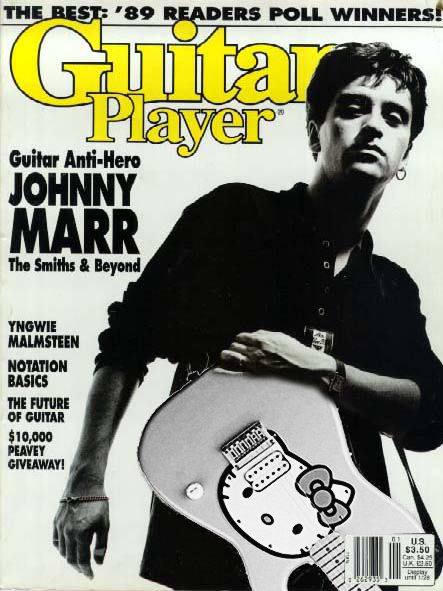 Weird — back when I wrote this GP cover story, I never even noticed the Hello Kitty guitar! Maybe it’s because of the crescendo of chatter about a Smiths reunion, but I’ve had Johnny Marr on the brain lately. (Full disclosure: I am a total, drooling fan.) I keep coming back to how deceptively simple his parts are, with an emphasis on the “deception” part. There’s always much more happening than initially meets the ear.
Perfect example: “This Charming Man,” the band’s first single. It’s always been my favorite Smiths guitar performance — even more than the apocalyptic tremolo and harmonizer work of “How Soon Is Now?” Maybe it’s because I’m still astounded by the originality and sheer chutzpah of the young guitarist, who was all of 19 when the track was released.
“This Charming Man” is a perfect little pop guitar part, with an African highlife-inflected head and lots of pretty open-string chiming throughout. But the deeper you dig, the more you uncover. And you won’t believe what I uncovered during my latest Smiths geek-out:
MORE→
 Not for everybody: The sickest mongrel strat yet. Okay, I lied.
In the previous installment of our ongoing mongrel strat series, I experimented with a version of Gibson’s oddball Vari-Tone circuit. I said it was too fussy and complex, and that I wanted to experiment with a simplified version.
So naturally, I built a “parts” Strat with a Vari-Tone twice as complicated as the original — a configuration I’ve dubbed the “Obsessive/Compulsive Tone Control.” I also deployed some of my favorite quirks and wiring tricks from previous strat experiments, plus a few new hardware discoveries. Result: a weird-ass guitar that only a geek could love a cool, one-of-a-kind instrument.
Check out the demo. Post-mortem after.
MORE→
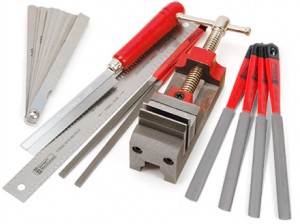 Better tools than I deserve: The Stew-Mac Essential Nut Making Tool Kit Not something I’d recommend to everyone, but…
…as part of an ongoing series on mongrel/hybrid Strats, I’ve built a new Strat from parts to house all the cool little tricks and quirks I stumbled upon during the series. (Wait till you hear the “Obsessive/Compulsive Capacitance” tone control!) I’ll be doing a post on the guitar next week.
Anyway, lazy slob perfectionist that I am, I usually take my instruments to my local guitar tech/genius Gary Brawer for setup work, especially for carving and fine-tuning the all-important nut. But feeling brave, I ordered a few blanks from Stewart MacDonald and tried making a nut from scratch.
Numerous times, actually.
The first attempt was, of course, an unmitigated disaster. The second one was a little better — I’d call it a mitigated disaster.
Only a poor craftsmen blames his tools, so I blamed my tools. I sprung for Stew-Mac’s Essential Nut Making Tool Kit, with all the proper files, saws, feeler gauges, and a nifty little vise. And it actually did help — thanks to some great instructions from the ever-reliable Dan Erlewine, which you can find here. (Understand that my workbench skills are a joke. I’m the kind of guy who grabs a screwdriver to pound a nail rather than take 30 seconds to fetch the…whatever the hell you’re supposed to use.)
Anyway, I saved a fortune! My new nut cost less than ten bucks — plus $200 in tools and about $2,000 in labor.
Am I bitter? No way! I learned a ton, and the next time I need a nut, whether it’s made by me or someone competent, I’ll have a much better idea what to go for. I kept comparing it to making one’s own shoes — not something most of us are dumb enough to try, but man, you’d sure learn a few things about the contours of your feet!
I’m not posting a pic of my work because it looks really nasty, and Gary Brawer might see it and laugh at me. But ugly as it looks, my third home-cut nut actually feels and sounds great. (BTW, I tried working with both real bone and the simulated stuff from Tusq. Both materials have their staunch advocates, but I can’t claim to perceive all that much difference in tone or workability.)
Anyone else tried this at home? (I’m not talking to you, pro luthiers — I mean regular people!)
 True fact: While Jimmy Page is usually pictured with a Les Paul, he recorded many of Led Zeppelin's greatest tracks with Fender guitars. (Artist's conception.) All aboard, mateys! Join our ship of fools as we sail the fiercest seas of guitar electronics: Yes, the legendary Jimmy Page wiring scheme. There will be NO QUARTER for pickup pussies!
Actually, there will be a great deal of quarter as we help each other with this cool but tricky project. I’ll be disembolwing the black Les Paul Custom I wrote about here. My hope is that many of you will join me on this voyage. We can troubleshoot together, share tips, and commiserate after we’ve destroyed a bunch of nice guitars other things.
As you probably know, this complex wiring scheme transforms a standard Les Paul into an über-versatile tone machine with added series/parallel, phase-canceling, and split-coil options. It was the means by which Pagey reproduced the many Telecaster and Danectro parts from Zep’s studio albums when performing live.
We’ll cover the classic arrangement, with four push/pull pots. Then we’ll go a step further: If you add a pair of Seymour Duncan Triple Shot Mounting Rings to the mix, you get many more options than with the original scheme. Yes, we can all be bigger badasses than Pagey. 
(FWIW, I’m less interested in cloning Page’s setup than in mastering the ins and outs of alternative humbucker wiring. So think of this as a chance to explore all available options, and refine a mod that works best for you.)
Here’s what you must have before setting sail:
MORE→
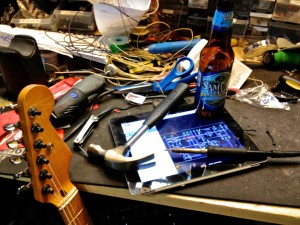 iPad: Your pathway to a more productive and better organized workspace! It’s not as if Apple needs more free publicity, but IMHO, the iPad is the greatest workbench and rehearsal room innovation since the Mesopotamians perfected beer.*
Seriously — I find myself reaching for the thing as often as I reach for the soldering iron. In fact, I sometimes confuse the two, which probably explains the sketchy wiring in my pedals and the mysterious burns on my fingertips.
Marketing hype notwithstanding, there’s isn’t always “an app for that.” (In particular, I eagerly await the “Why Doesn’t This $^%&Y# Thing Work?” app.)
But I would like to share a few tools that proven consistenly useful in the two years since the iPad’s debut. Prices range from free to a whopping $5.99 for Electronic Toolbox Pro.
Is anyone else foolhardy enough to expose their expensive mobile devices to hazardous workbench and rehearsal room environments? What are your observations? Recommendations? Bitter regrets? Do tell.
* Just kidding. Kids, don’t drink and solder.

Sad news: Jim Marshall of Marshall Amplification has passed away at age 88. More info here.
He was a nice guy. I once ran into him, of all places, in a elevator in Tokyo.
 Move along — there's nothing to see here. Ordinarily I wouldn’t publicize “causes” on this site, but this one has special relevance for musicians and music fans.
My pal Count, a producer/mixer who’s done work for Radiohead, DJ Shadow, New Order, the Stones, No Doubt, and many other artists, is launching an online campaign to get musicians, producers, engineers, and other contributors credited on iTunes, Pandora, and other digital music services.
Consider the absurdity of the current situation: Why, in the digital age, are we granted only a fraction of the info available in the analog age? Why should fans be denied the details of their favorite recordings? And for underpaid musicians and technicians, the credit is often the only meaningful payment for services, a possible path to future work. The current state of affairs is just plain wrong!
If you agree that this is worthy goal, check out the page for Count’s Credit Is Due Facebook campaign.
 Vintage P.A.F. pickups are like snowflakes — only a lot louder and a lot more expensive. Aficionados of the P.A.F.pickup, the original humbucker, often say that vintage models are like snowflakes — no two are identical, due chiefly to the the pre-digital inconsistencies of their windings.
One particularly memorable pair of snowflakes resides in Joe Bonamassa’s 1959 Les Paul, the crown jewel of Joe’s insanely huge guitar collection. Joe and Seymour Duncan teamed up to duplicate their sound, and have released the results as the Joe Bonamassa Signature Pickup Set. As a rabid fan of Seymour P.A.F.-inspired Seth Lover and Antiquity Humbucker models, I couldn’t wait to smear greasy fingerprints all over the new set.
I got to hang out in the studio with Joe a few years ago during a project I was working on for Apple. He’s a phenomenal player, a nice guy, and a walking encyclopedia of guitar gear. There aren’t many players who better understand the glory of a great P.A.F. — and how to make the most of it.
As promised, these pickups provide superb P.A.F. tones, and they have a sonic personality quite distinct from Duncan’s other P.A.F. models. Check out this little demo I recorded:
MORE→
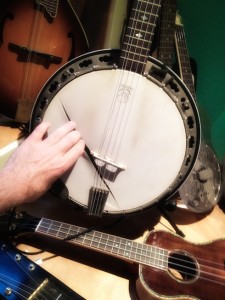 A message from Earl? Weird but true: After my experience last week with simulated gut strings, I ordered a banjo set, figuring I’d restring my beautiful Deering with “nylgut” for an old-timey pre-bluegrass sound. But as soon as I tuned up, BANG! The head ripped in two.
I went upstairs and told my wife, “That’s weird — I’ve had that head on there for more than 20 years,” and she said, “That’s really weird — Earl Scruggs just died. Your banjo must be in mourning.”
Maybe. Or maybe Earl was just saying, “Don’t turn your back on bluegrass too fast, now, son.”
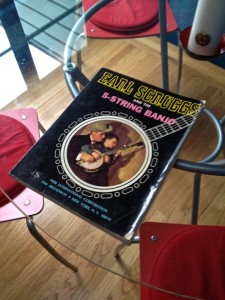 I’m not much of a player, though I’ve used the instrument a lot on Tom Waits records. I bring the Deering to sessions, but he always says, “Why don’t you play one of mine?” He has a couple of beat-to-hell early-20th-century open-backs with crusty old strings — a sound he describes as “death banjo.” Which is especially morbid given yesterday’s sad news. I’m not much of a player, though I’ve used the instrument a lot on Tom Waits records. I bring the Deering to sessions, but he always says, “Why don’t you play one of mine?” He has a couple of beat-to-hell early-20th-century open-backs with crusty old strings — a sound he describes as “death banjo.” Which is especially morbid given yesterday’s sad news.
Anyway, I learned as a kid from Scruggs’ 1968 instruction book. I still keep it on my shelf.
|
|







